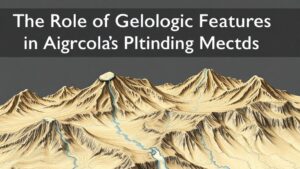Combining Old Maps With Modern Satellite Imagery to Find Abandoned Mines
Combining Old Maps With Modern Satellite Imagery to Find Abandoned Mines
The quest for abandoned mines has gained renewed attention in recent years, driven by the desire to reclaim valuable resources, increase public safety, and preserve historic sites. The integration of old maps with modern satellite imagery presents a powerful tool for researchers and mining enthusiasts alike. This article explores the methodologies, benefits, and implications of this approach, underscoring its significant contributions to the field of environmental archaeology and resource management.
The Value of Old Maps
Old maps, particularly those created during the height of the mining boom in the 19th and early 20th centuries, provide invaluable insights into mining locations, methods, and the landscapes as they once were. Historical cartography often includes:
- Geological information indicating mineral deposits.
- Topographical details that highlight accessibility and infrastructure.
- Annotations from miners and explorers, which can reveal operational mine workings.
For example, a study of California’s Gold Rush era maps has shown that certain areas marked for mining activity contain remnants of infrastructure that can be pinpointed using modern technology. This illustrates how historical documentation serves as a foundational tool for contemporary explorations.
Modern Satellite Imagery: A Current Perspective
Modern satellite imagery has transformed how we observe and interact with our planet. Using various types of imaging technologies–such as multispectral, hyperspectral, and radar–researchers can gather data about the Earths surface without physical access. Key advantages of satellite imagery include:
- High-resolution images that reveal surface features with precision.
- The ability to cover vast expanses of land quickly, identifying potential mine sites more efficiently.
- Access to temporal data, which provides insights into changes over time.
For example, a project in the Appalachian region utilized satellite imagery to identify areas of environmental degradation linked to abandoned mines, allowing researchers to assess the extent of ecological impact.
Methodology: Integrating Old Maps with Satellite Data
The process of combining old maps with modern satellite imagery entails several key steps:
- Digitization: Old maps are first digitized using Geographic Information System (GIS) software, enabling overlay with satellite images.
- Georeferencing: The old map is aligned with geographic coordinates, ensuring accurate placement relative to current land features.
- Analysis: Researchers analyze differences in terrain and land use, using satellite data to spot anomalies that may indicate buried or hidden mines.
- Verification: Field verification may be conducted to validate findings from the digital analyses, ensuring the reliability of identified mine sites.
For example, a recent study in Colorado used this integrated approach to uncover lost mining sites that were previously undocumented by matching 19th-century mining claims with current satellite imagery.
Challenges and Limitations
While the integration of old maps with modern satellite imaging offers remarkable advantages, it is not without its challenges:
- Old maps may suffer from inaccuracies due to outdated surveying methods.
- Satellite images may be obstructed by vegetation or other environmental factors that obscure visibility.
- Costs associated with high-resolution satellite data can be prohibitive, especially for smaller projects or non-profit organizations.
Addressing these limitations requires a multi-faceted approach that balances technological capabilities with field studies and historical context.
Real-World Applications
The combination of old maps with modern satellite imagery has practical applications beyond mere identification of abandoned mines:
- Restoration projects can be better planned, utilizing historical information to understand previous use of land.
- Environmental assessment and monitoring can be enhanced by mapping former mine sites and assessing their ecological consequences over time.
- Educational projects can utilize these integrated findings to teach about local history, geology, and environmental stewardship.
For example, groups in Nevada have created educational programs that teach students about the states mining history while using technology to track and analyze the impacts of historical mining practices.
Actionable Takeaways
Combining old maps with modern satellite imagery represents a significant advancement in the search for abandoned mines, with broad implications for resource management and environmental preservation. Key takeaways include:
- Leveraging historical cartography in modern explorations can yield significant findings.
- GIS technology is essential for successful integration and analysis of disparate data sets.
- Understanding both the capabilities and limitations of satellite imagery is crucial for accurate research.
To wrap up, the fusion of the past and present through innovative technologies not only helps unearth abandoned mines but also fosters a deeper appreciation for our shared geological heritage.


